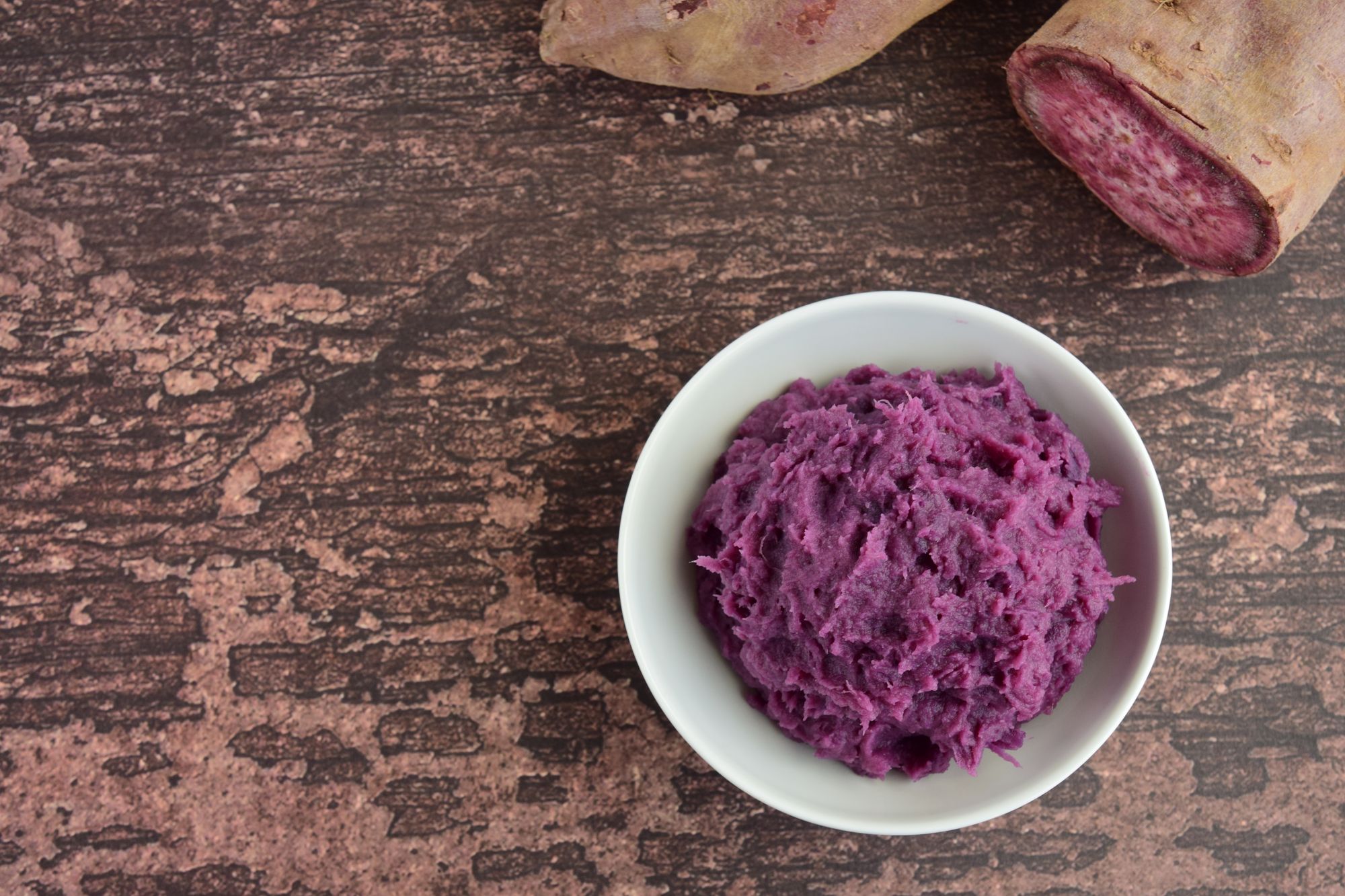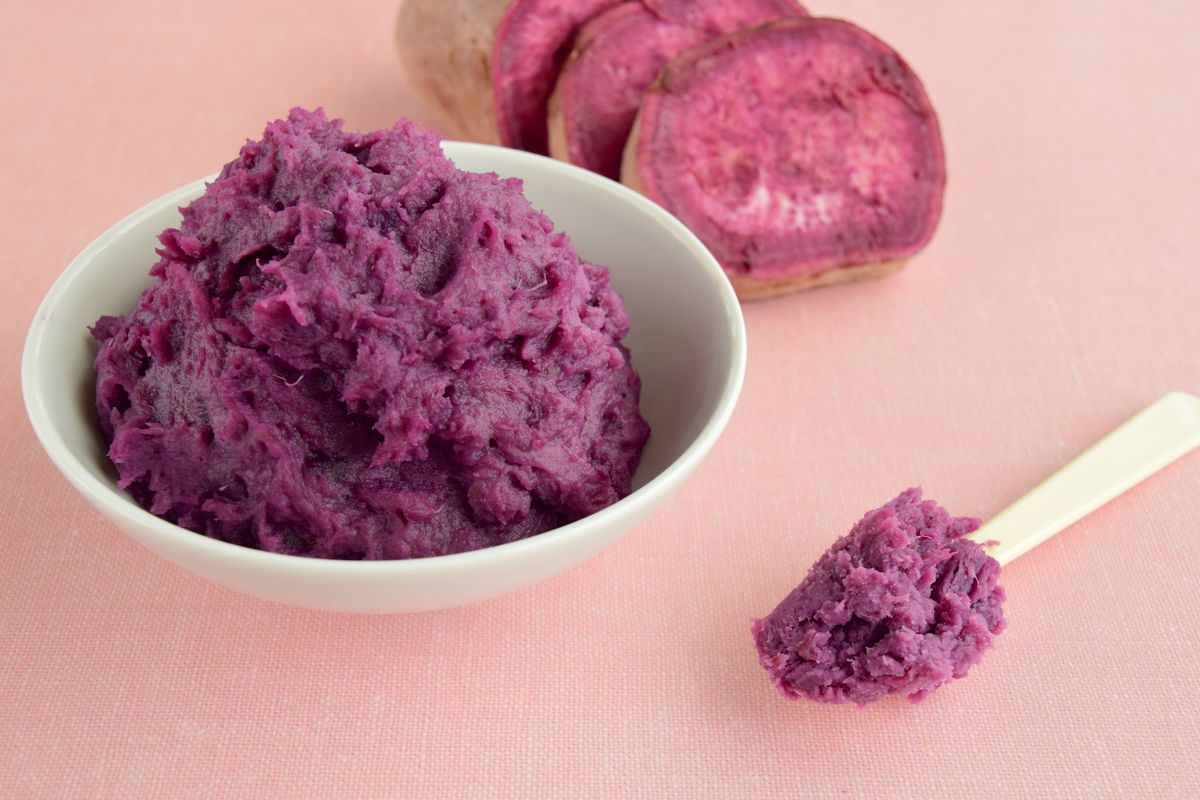n the vast realm of visually captivating foods that inundate our social media feeds, there's one exceptionally versatile and vibrant vegetable that reigns supreme. From its delightful metamorphosis into an array of culinary creations, you may have stumbled upon magnificent purple donuts, tantalizing ice cream cones, or even burger buns boasting a vivid hue while scrolling through your Instagram feed. Perhaps during a routine trip to Trader Joe's, you encountered an intriguing box of pancake mix, boasting a captivating violet shade. Behind the scenes, all these delectable delights share a common secret: the mesmerizing presence of ube (pronounced "oo-bay").
However, ube's appeal extends far beyond its striking color palette. It harbors a captivating story that goes beyond its outward appearance. Delve into the depths of this aesthetically pleasing ingredient as we unravel its enigmatic nature.
Unveiling the Essence of Ube: A Purple Yam Marvel

If you've ever wondered about the vibrant allure of ube, allow us to shed light on this captivating purple yam. Hailing from Southeast Asia, specifically the Philippines, ube, derived from the Tagalog word for "tuber," has secured its place in Filipino cuisine. Distinguishing itself from its cousin, the purple sweet potato, ube boasts a darker, bark-like exterior and grows on a vine, while purple sweet potatoes thrive underground and exhibit a smoother skin that can be either purple or white, depending on the variety.
Frequently gracing dessert menus, ube offers a delightful medley of flavors. Described as mildly sweet with hints of nuttiness and vanilla, it also emits a delightful coconut-like aroma, as pointed out by Amy Goodson, MS, RD, CSSD, LD, a registered dietitian and author of The Sports Nutrition Playbook.
Though ube has been cherished for centuries, its ascent to stardom in the United States can be traced back to the renowned Manila Social Club, a former Filipino restaurant in Brooklyn, NY. In 2015, their introduction of the extravagant $100 Golden Cristal Ube Donut caused a sensation, propelling this remarkable root vegetable into the mainstream spotlight.
Unveiling the Remarkable Health Benefits of Ube: A Nutritional Powerhouse

The purple yam, known as ube, possesses an array of health benefits that extend well beyond its visually appealing nature. According to Lauren Manaker, MS, RDN, a registered dietitian and author, ube, like other yam varieties, serves as an excellent source of carbohydrates, fiber, and an array of essential micronutrients, including calcium, vitamin C, and iron. The U.S. Department of Agriculture (USDA) reveals that every 100 grams (3.5 ounces) of ube contains approximately 120 calories, 1 gram of protein, 0 grams of fat, 27 grams of carbohydrates, 4 grams of fiber, and no sugar. Additionally, it offers valuable vitamins and minerals such as calcium, iron, vitamin C, and vitamin A.
What sets ube apart is its rich content of anthocyanins, water-soluble pigments responsible for the signature red, blue, and purple hues found in various fruits and vegetables. These powerful antioxidants safeguard cells against damage caused by free radicals, showcasing potential in reducing inflammation and protecting against diseases.
Furthermore, ube offers remarkable benefits for blood sugar management and gut health. Notably, it possesses a low glycemic index, meaning its carbohydrates are broken down slowly into sugars, ensuring sustained energy levels instead of sudden spikes. Ube also contains resistant starch, a type of starch that acts as a prebiotic, nourishing healthy bacteria in the gut and contributing to overall gut health.
With its remarkable nutritional composition, Ube emerges as a nutritional powerhouse that offers a range of health benefits. From providing essential nutrients to supporting blood sugar control and fostering a healthy gut, this vibrant root vegetable is a valuable addition to any balanced diet.
Uncovering the Popularity of Ube: A Cultural Culinary Delight
While the striking color of ube undeniably contributes to its widespread attention, Lauren Manaker suggests that the appeal of the purple yam extends beyond its appearance.
Ube has long been cherished in specific regions worldwide, but it is now gaining popularity among groups in the United States who have never encountered it before. As people increasingly embrace the exploration of diverse culinary traditions, the allure of trying new foods from various cultures has become prominent. Ube, with its rich history and unique flavor profile, has captivated the curiosity and adventurous palates of individuals eager to expand their culinary horizons.
The rising popularity of ube signifies a broader movement toward embracing global flavors and celebrating the vibrant diversity of food. As more individuals discover the wonders of ube and its versatility in various dishes, its popularity continues to soar, creating a bridge between cultures through the shared joy of exceptional culinary experiences.
Exploring the Culinary Delights of Ube: A Gastronomic Adventure

One of the remarkable aspects of ube is its incredible versatility in the kitchen. Classic Filipino recipes showcase the wonders of this root vegetable, offering a diverse range of culinary experiences that will tantalize your taste buds.
Ube halaya, a beloved sweet jam created by boiling and mashing ube, is a staple in Filipino cuisine. Its rich and creamy texture, along with its subtly sweet flavor, makes it an irresistible treat. Another iconic Filipino dessert is halo-halo, a delightful concoction featuring shaved ice, evaporated milk, and an assortment of toppings such as ube, coconut strips, and tapioca pearls. The combination of flavors and textures creates a refreshing and indulgent dessert experience.
If you have a penchant for sweets, a three-ingredient, no-churn ube ice cream may be the perfect treat for you. By combining sweetened condensed milk and heavy whipping cream with the vibrant purple goodness of ube, you can create a luscious and creamy ice cream that is sure to delight your taste buds.
Embark on a gastronomic adventure with ube, and let your culinary creativity flourish. Whether you indulge in traditional Filipino delicacies or venture into innovative and unique creations, the versatility of ube promises a delightful experience that will satisfy your cravings and leave a lasting impression.

